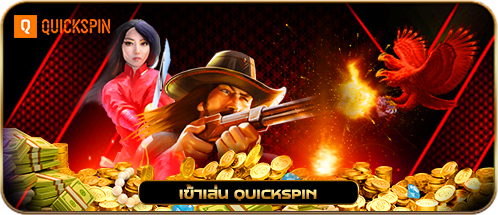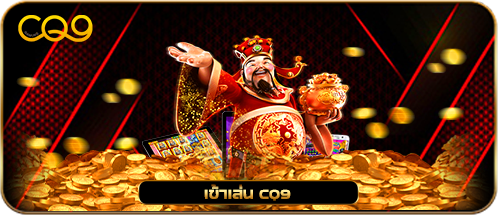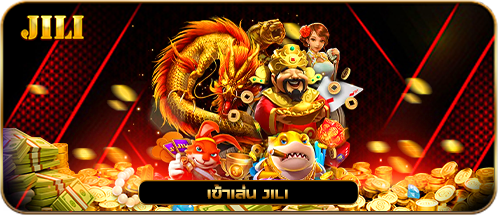





วิธี สมัคร sbobet ไม่ผ่านเอเย่นต์ เติมเงินผ่าน TrueMoney Wallet ระบบฝากถอนอัตโนมัติทุกค่าย Joker Gaming, PGSlot, Slotoxo ค่ายเกมสล็อตออนไลน์ที่ให้บริการโดยระบบ True Money Wallet เล่นอย่างน้อย เกมสล็อตแตกง่าย เล่นผ่านโทรศัพท์มือถือหรือคอมพิวเตอร์
เราเปิดให้บริการมากว่า 10 ปี นำเสนอเกมการพนันออนไลน์ ให้ลูกค้าได้เลือกเล่นเกมมากมาย เช่น SA Gaming, Sexy Baccarat, เกมไพ่, แบล็คแจ็ค, รูเล็ต, เสือมังกร, ไฮโล, ไก่ชน, เกมยิงปลา, ไพ่ป๊อกเด้ง ในรูปแบบที่ปลอดภัยและทันสมัยที่สุด
ข้อมูลของคุณจะถูกเก็บเป็นความลับอย่างเคร่งครัด และ เว็บตรง สล็อตฝากถอน ไม่มี ขั้นต่ำ 1 บาทก็ ถอนได้ ก็เล่นได้ไม่ยาก รองรับโทรศัพท์มือถือทุกประเภท IOS หรือ Android ตรงตามมาตรฐานระดับโลกและเชื่อถือได้มาก สมัครสมาชิกวันนี้ รับโปรโมชั่นสุดพิเศษมากมาย

เพราะเว็บของเราได้นำเกมการพนันยอดนิยมอย่าง สล็อต บาคาร่า หรือเกมยิงปลามารวมไปถึงเกมเดิมพันกีฬา แม้แต่ แทงบอล และเกมเดิมพันกีฬาอื่นๆ อีกด้วย ด้วยเว็บของเราคุณสามารถวางเดิมพันได้ตลอด 24 ชั่วโมง เว็บสล็อต เว็บจริงอันดับ 1 ไม่ผ่านเอเย่นต์ แตกง่าย พบกับฟีเจอร์ที่แตกต่าง แตกต่างจากเว็บอื่น ๆ เว็บสล็อตนี้เป็นของแท้ ถอดรหัสง่าย และ วิธี สมัคร sbobet ไม่ผ่านเอเย่นต์ มีบริการเกมที่มีมาตรฐานสูง เพราะ เว็บตรง สล็อตฝากถอน ไม่มี ขั้นต่ำ 1 บาทก็ ถอนได้ ตั้งใจที่จะคัดสรรแต่ละเกมเพื่อให้สมาชิกได้เลือกเล่นตามใจชอบและสนุก
สนุกกับผู้ให้บริการสล็อตที่ดีที่สุดจากเว็บดัง แหล่งรวมเกมสล็อตชั้นนำทั่วโลก เล่นง่าย จ่ายจริง เดิมพันได้ เพิ่มความมั่นใจในการวางเล่น ชนะง่าย แพ้บ่อย และมีโหมด ทดลองเล่นฟรี ก่อนเล่นไม่ต้องฝากระบบทันสมัย ศึกษา และทดลองเล่นก่อนเดิมพันจริง เว็บสล็อตสดในต่างประเทศไม่น้อยกับเว็บสล็อตชื่อดังมีให้เลือกมากมายให้โบนัสและโปรโมชั่นไม่จำกัดรวมถึงกิจกรรมพิเศษต่างๆ เพื่อรับรายได้มหาศาลให้กับผู้เล่นทุกคน อย่าพลาด อย่ารอช้า มาสมัครสมาชิกกับเราสิ
โบนัส 20 รับ 100 บอกเลยว่าคุณจะได้เครดิตฟรีมากมายแน่นอนลูกค้าที่มีรายได้น้อย โปรโมชั่นทำเงินยอดนิยมที่ดีสำหรับทุกคน ผู้คนเล่นเกมและค่ายเกมสล็อตกำลังมาแรงจริง ๆ ในตอนนี้ และตอนนี้พวกเขากำลังสร้างเกมสล็อตจากตัวละครดัง ๆ มากมายและใช้เป็นสัญลักษณ์ในเกมทำให้คุณมีทางเลือกในการเล่นเกม
เล่น สล็อต pg เว็บตรง แตกหนัก 20 รับ 100 ถึง 200 ความหลากหลาย กราฟิกที่ดีขึ้น และคุณสมบัติต่างๆ ที่จะมอบความสนุกสนาน ความตื่นเต้น และคุณค่าให้กับคุณอย่างแน่นอน
สนับสนุนโดย True Wallet เพื่อทำความเข้าใจโปรโมชั่นให้ลึกซึ้งยิ่งขึ้น วิธี สมัคร sbobet ไม่ผ่านเอเย่นต์ จัดขึ้นเพื่อให้สมาชิกทุกท่านที่สมัครใช้บริการเกมสล็อตพนัน การรับโปรโมชั่นถือเป็นการสร้างมูลค่าและชดเชยให้สมาชิกทุกคนได้รับมูลค่าเพิ่ม ด้วยการสนับสนุนสมาชิกทั้งหมดเพียงสมัครสมาชิกก็จะได้รับโปรโมชั่นสุดคุ้ม ถอนได้ไม่จำกัด

สมัยนี้การมาเล่นสล็อตไม่ใช่เรื่องยากไม่ต้องตกใจ ไม่ต้องใช้เงินจำนวนมากเพื่อให้สามารถเล่นสล็อตได้ เพราะเว็บ สมัคร sbobet โดยตรง ของเรามีโปรโมชั่นดีๆ เพียงฝากเงิน 20 บาท คุณก็จะได้รับ 100 บาท ตามโปรโมชั่นของเรา เพียงแค่ต้องปฏิบัติตามเงื่อนไขเท่านั้น
โปรโมชั่น 20 ได้ 100 รวม 200 ถอน 100 คุณเพียงแค่ต้องปฏิบัติตามกฎของเรา ง่ายมาก เรารวบรวมข้อมูลบนพื้นฐานของการรับโปรโมชั่นที่ดีที่สุดเพื่อแบ่งปันกับคุณ ลองติดตามดู play.sbobet กัน เงินสามารถถอนออกได้ทันทีดังนั้นคุณต้องเล่นการพนันในร้านและรับเงินรางวัลเพื่อถอนเงินรางวัลคุณมีเงินเดิมพันคุณสามารถเดิมพันสล็อตตามความต้องการและเลือกสกุลเงินพื้นฐานได้
ด้วยการเดิมพันเพียงครั้งเดียวคุณก็มีสิทธิ์ลุ้นรางวัลสูงที่ วิธี สมัคร sbobet ไม่ผ่านเอเย่นต์ถึงหลักพันหรือหลักหมื่นในคราวเดียวแม้ว่าคุณจะวางเดิมพัน 100 บาทคุณเดิมพันและชนะ 200 บาทก็สามารถทำกำไรได้ 100 บาท และหากความรู้ในการสมัครได้รับการอนุมัติ คุณก็สามารถรับเงินจากการพนันด้วยเครดิตที่คุณมี








เงินฟรีนี้จะถูกแจกจ่ายให้กับนักหมุนสล็อตทุกคน เพราะคุณสามารถชนะแจ็คพอตในเกมสล็อต สล็อต pg เว็บตรง แตกหนัก ได้อย่างง่ายดายโดยไม่ต้องใช้เงินเลยยังมีโอกาสลุ้นรางวัลใหญ่แยกกันสำหรับผู้ใช้เพียง 400 คนเท่านั้น นอกจากนี้ยังมีระบบฝากและถอนเครดิตผ่านระบบ True Wallet ซึ่งเพิ่มความสะดวกในการฝากและถอนเครดิตอย่างมากทำให้ผู้ใช้สามารถฝากเครดิตโดยการโอนผู้เล่นผ่าน True Wallet ซึ่งเป็นกระบวนการง่ายๆ เพียงไม่กี่ขั้นตอนและ 30 วินาทีในการเติมเงินเครดิตของคุณ วิธี สมัคร sbobet ไม่ผ่านเอเย่นต์ ได้เตรียมการพิเศษสำหรับผู้เล่นทุกคน

เว็บคาสิโนออนไลน์ควรมีทุกคำที่เกี่ยวข้องกับการพนัน การพนัน หรือคาสิโน หรือเลขเด็ด หรือคำศัพท์เกี่ยวกับการพนันหรือคำศัพท์เกี่ยวกับคาสิโน ให้เครดิตฟรีอย่างน้อย 300% เนื่องจากให้เครดิตฟรีมากถึง 3 เท่าของจำนวนเงินฝาก 100 รับเครดิตฟรีสูงสุด 300 บาท ผู้คนจะดูข้อตกลงการถอนเงินเนื่องจากการถอนเงินจากเว็บที่ให้บริการคาสิโนที่ดี เป็นวิธีการสร้างรายได้มหาศาลหลายรอบ เพราะถือเป็นรูปแบบหนึ่งของความโปร่งใสในการให้บริการแก่สมาชิก วิธี สมัคร sbobet ไม่ผ่านเอเย่นต์
ตัวเลือกอันดับหนึ่งของเกมเดิมพันออนไลน์คาสิโนออนไลน์ที่ตอบสนองความต้องการของทุกคนตลอด 24 ชั่วโมง สนุกแบบไม่ต้องคิดถึงใครเลย ระบบที่สมบูรณ์ที่สุดในเว็บเดียว ได้เงินจริงโดยสามารถเล่นคาสิโนออนไลน์ สล็อต ฝากถอน ไม่มี ขั้น ต่ํา วอ เลท เว็บตรงไม่ผ่าน เอ เยน เว็บสด โทรศัพท์มือถือ หรือคอมพิวเตอร์ เล่นได้ทันทีทุกระบบ ไม่จำเป็นต้องดาวน์โหลด
ตัวเลือกอันดับหนึ่งของเกมเดิมพันออนไลน์คาสิโนออนไลน์ที่ตอบสนองความต้องการของทุกคนตลอด 24 ชั่วโมง สนุกแบบไม่ต้องคิดถึงใครเลย ระบบที่สมบูรณ์ที่สุดในเว็บเดียว ได้เงินจริงโดยสามารถเล่นคาสิโนออนไลน์ สล็อต ฝากถอน ไม่มี ขั้น ต่ํา วอ เลท เว็บตรงไม่ผ่าน เอ เยน เว็บสด โทรศัพท์มือถือ หรือคอมพิวเตอร์ เล่นได้ทันทีทุกระบบ ไม่จำเป็นต้องดาวน์โหลด